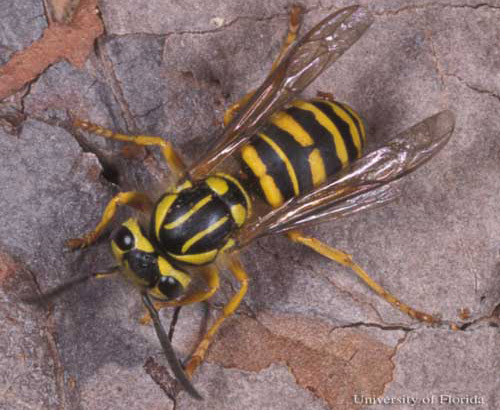
by Matt Lollar | Sep 1, 2021
Last week I was trimming shrubs around my house and I had the wild idea to pull up a couple yaupon holly saplings around the base of a live oak tree…without looking. As I was pulling up one of the saplings I felt a piercing sting on my ankle. I yelled some obscenities and ran away as quickly as I could, but it was no use. By the time I got far enough away, I had been stung eleven times and I still had a few yellowjackets flying around in my shorts.

Southern yellowjackets create underground colonies that can hold over 2,000 yellowjackets. Photo Credit: UF/IFAS
Two species of yellowjackets can be found in Florida along with a similar species known as the baldfaced hornet. The eastern yellowjacket (Vespula maculifrons) is found in eastern North America and the southern yellowjacket (Vespula squamosa) is found in the eastern United States, Mexico, and Central America.
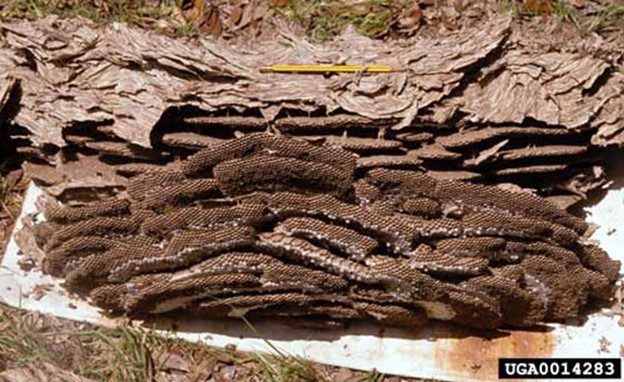
Southern yellowjacket, Vespula squamosa (Drury), nest dug from ground.
Credit: Gerald J. Lenhard; http://www.insectimages.org/
Yellowjacket colonies are started in the spring by a single queen that mated in the fall and overwintered. Yellowjacket nests consist of a series of horizontal combs that may be above ground, underground, or both. The queen builds the initial nest and forages for food on her own. Her offspring then assume all jobs except for laying eggs. In the fall, larger cells are built for a new batch of queens. The new queens then emerge, mate, and seek shelter for the winter. The old queen dies and the remaining colony breaks down.
Yellowjackets aren’t all bad, they provide a great service to our gardens and landscapes by attacking a number of insects that are pests to our crops. However, the moral of this story is to always be aware of what is lurking under your feet and above your head. And maybe yaupon hollies shouldn’t be messed with regardless of their native invasiveness. Nests are less active at night, but any disturbance will trigger an attack. However, it is best to leave nest removal to professionals.
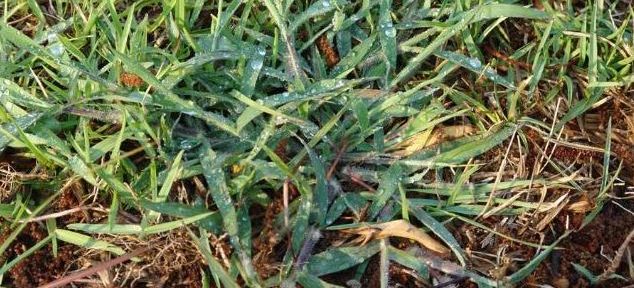
by Larry Williams | Aug 26, 2021
Hot, summer months are not the time to be using most lawn herbicides.
One issue is the heat of summer. Most lawn herbicide labels include statements such as the following.
“Do not apply when temperature exceeds 90°F.” “Do not broadcast apply this product when air temperatures are above 90°F (85°F for St. Augustinegrass) unless temporary turf injury can be tolerated.”
Every year we’ll see lawns that are injured or killed because of lawn herbicides being applied when temperatures are too hot.
Summer is usually a rainy and windy time of the year. Many lawn herbicide labels include statements such as the following.
“Allow 12 hours after application before watering lawn for maximum effectives on listed weeds.” “Apply only when wind is no more than 10 mph.” “Applying this product in calm weather when rain is not predicted for the next 24 hours will help to ensure that wind or rain does not blow or wash pesticide off the treatment area.”
It is critical to read and follow the label directions and precautions for any pesticide you use. Pesticide labels, including herbicides, include the following statements.
“To the extent consistent with applicable law, the buyer assumes all risks of use, storage, or handling of this product not in accordance with label directions.” “It is a violation of Federal law to use this product in a manner inconsistent with its labeling.”
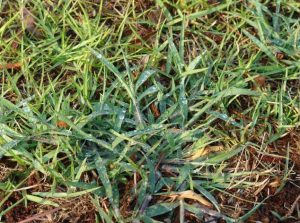
Crabgrass growing in centipedegrass lawn. Photo credit: UF/IFAS Extension
By the time summer arrives, many of the lawn weeds are mature, which means they are well established with extensive root systems. These mature, well established weeds are much more difficult to control. They are more susceptible to herbicides when they are small, young, and not well established. Also, these mature weeds have been allowed to produce countless numbers of seeds as they move into summer. Most weeds are prolific seed producers. For example, a single crabgrass plant (a common summer lawn weed) can produce 150,000 seeds.
Applying a preemergence lawn herbicide in February to help prevent summer annual weeds such as crabgrass or applying a postemergence lawn herbicide during spring while the weather is mild and before the weeds are out of control simply makes more sense than waiting until summer.
The best options now with lawn weed control involve continuing to follow good mowing practices, maybe hand removal of some weeds, and just simply waiting it out until next February and spring to worry with the use of lawn herbicides.
In the meantime, you may want to read the following UF/IFAS Extension publication on lawn weed control.
https://edis.ifas.ufl.edu/pdf/EP/EP14100.pdf
Larry Williams, UF/IFAS
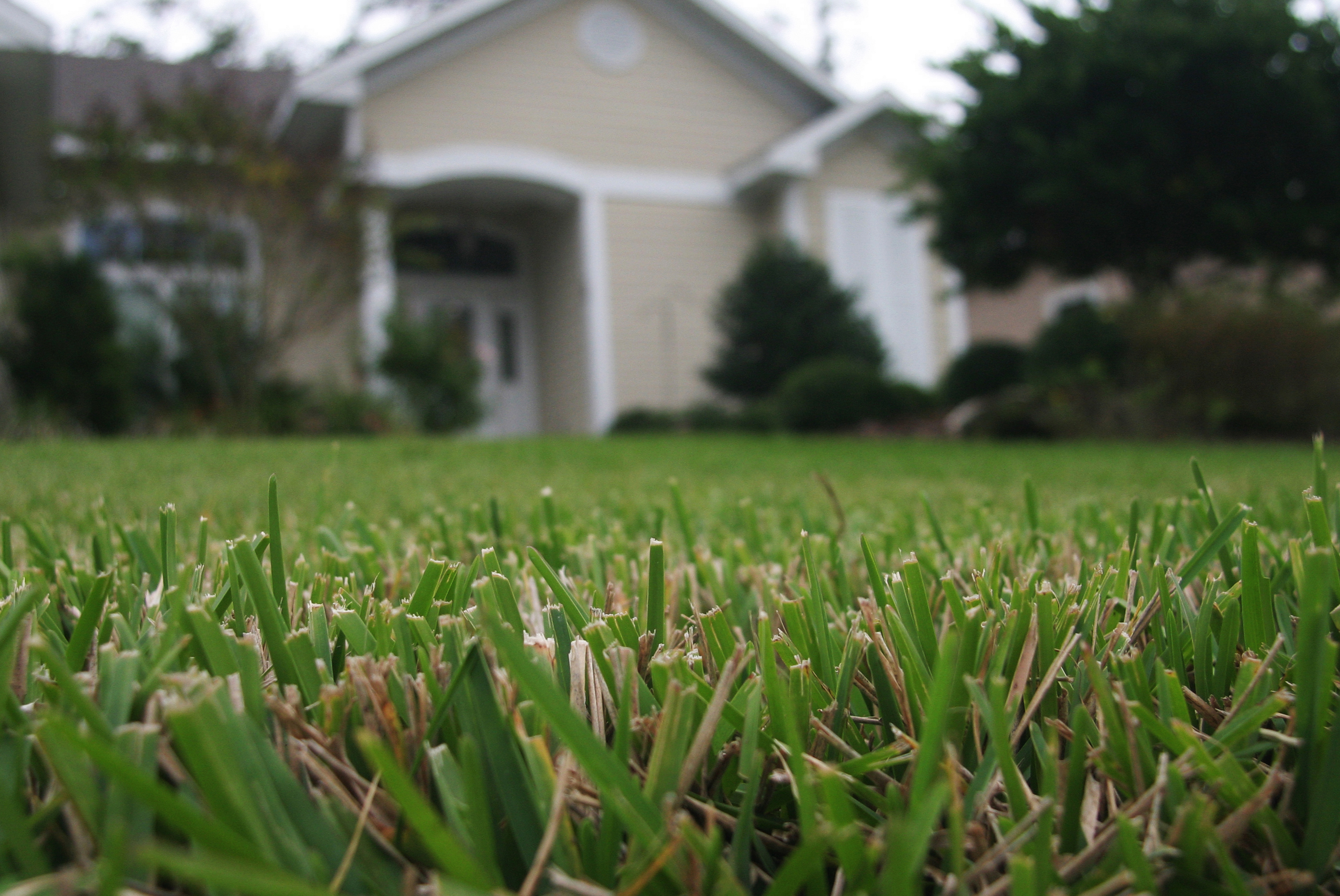
by Daniel J. Leonard | Aug 26, 2021
Nearly everyone likes turfgrass lawns. They’re pretty and green. They filter water, chemicals, and nutrients before they enter our groundwater systems. They provide a recreation spot for people and pets. But lawns also come with maintenance tasks, one of which is weed control. Fortunately, keeping our common Centipedegrass lawns relatively weed free is as simple as smart management and utilizing herbicides effectively. Though the number of herbicides available for purchase can be overwhelming, you only need three to keep weeds at bay – a selective grass herbicide, a strong broadleaf herbicide, and a sedge herbicide!
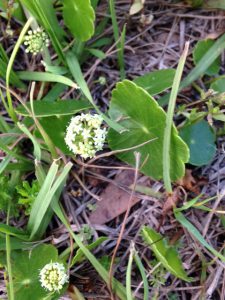
Dollarweed, one of the toughest broadleaf weeds for homeowners to control. Picture courtesy of Julie McConnell, UF/IFAS.
First up on the essential herbicide list is the selective grass herbicide Sethoxydim. While most folks’ weed focus is centered on broadleaf weeds, grassy weeds like Crabgrass, Bahiagrass, Goosegrass, and others can be just as problematic and make for a very unsightly lawn. Enter Sethoxydim. Cheap and easy to find, Sethoxydim is offered as the active ingredient in many branded products like Fertilome Over the Top Grass Killer, Hi-Yield Grass Killer, and many more. These products control weedy grass species without seriously harming Centipedegrass or broadleaf ornamental trees and shrubs (Centipedegrass may temporarily be yellowed after sethoxydim application but will recover). Not only will it kill out the unwanted grass growing in your Centipede, but it will also remove these weeds from your flower beds!
Second, having a strong broadleaf herbicide on hand is necessary. I say “strong” because many of the homeowner grade products available at garden centers simply don’t have the “juice” to control tough broadleaf weeds like Dollarweed, Doveweed, Virginia Buttonweed, and others. For this job, I prefer to use a commercial grade 3-way product like Celsius WG by Bayer. Celsius WG is a 3-way combination herbicide with a healthy dose of Dicamba as its primary ingredient. Though Dicamba is a notoriously volatile chemical known to cause damage to unintended plants through drift in hot weather, combining it with the two other products in Celsius WG makes it safe to use in lawns, even in the heat of summer. While strong broadleaf herbicides like Celsius WG are expensive on the front end, don’t let that deter you. These products wind up being very cost effective in the long run due to minute mixing rates (one bottle goes a very long way in most residential lawns) and effectiveness – you simply will not need to waste time and money spraying lawn weeds over and over to obtain control like is necessary with lesser products – one or two applications will solve the toughest broadleaf weed problems.
Finally, any good lawn weed control program will include a quality sedge control herbicide. Sedges (often called “nutgrass”) look like grasses but are a completely different category of plants and as such, require specialized herbicide chemistries to achieve control. Sedge weeds prefer wetter areas of lawns, though they can occur in pretty much any lawn site and are very unsightly. For this weed category, there are several options available to homeowners. The one that consistently provides the best control in lawns is Halosulfuron-methyl, the active ingredient in the aptly named product Sedgehammer. Conveniently coming in individually pre-mixed packets for small lawns or a larger bottle when more acreage is to be treated, Sedgehammer couldn’t be easier to mix and use. While Sedgehammer and similar products are extremely effective in controlling various sedge weeds, they tend to work very slowly, and patience is required. Weeds immediately stop growing following a Sedgehammer application, but it can take up to three weeks to notice the sedges dying.
While having and using the above three herbicides can control almost any weed homeowners may encounter in their lawns, it is important to remember that herbicides are not substitutes for proper lawn management. When good cultural practices in lawns are followed, such as mowing at the correct height, only watering when necessary, following UF/IFAS fertilizer recommendations, etc., chemical weed control may not even be necessary in many cases! Also, once the decision to purchase and use chemical herbicides has been made, it is critical that one always read the label before using any herbicide product. This ensures safe and effective use of the product; the label is literally the law!
For assistance in choosing the correct herbicide for your lawn and other lawn care concerns, contact your local UF/IFAS Extension Office! Happy Gardening!
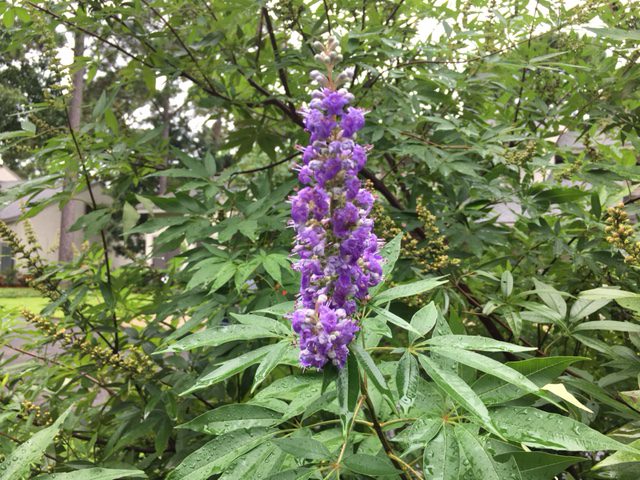
by Sheila Dunning | Aug 26, 2021
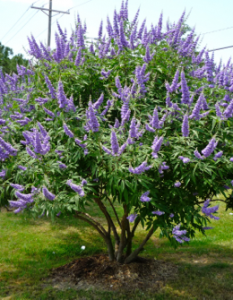
Photos by Sheila Dunning
The showy chaste tree makes an attractive specimen as the centerpiece of your landscape bed or in a large container on the deck. Much more of them are being seen since the Florida Department of Transportation has recognized the tree as a desirable median planting. Easy-to-grow, drought resistant, and attractive to butterflies and bees, Vitex agnus-castus is a multi-stemmed small tree with fragrant, upwardly-pointing lavender blooms and gray-green foliage. The chaste tree’s palmately divided leaves resemble those of the marijuana (Cannabis sativa) plant; its flowers can be mistaken for butterfly bush (Buddleia sp.); and the dry, darkened drupes can be used for seasoning, similar to black pepper, making it a conversation piece for those unfamiliar with the tree.
Vitex , with its sage-scented leaves that were once believed to have a sedative effect, has the common name “Chastetree” since Athenian women used the leaves in their beds to keep themselves chaste during the feasts of Ceres, a Roman festival held on April 12. In modern times, the tree is more often planted where beekeepers visit in order to promote excellent honey production or simply included in the landscape for the enjoyment of its showy, summer display of violet panicles.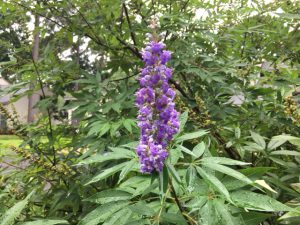
Chaste tree is native to woodlands and dry areas of southern Europe and western Asia. It will thrive in almost any soil that has good drainage, prefers full sun or light shade, and can even tolerate moderate salt air. Vitex is a sprawling plant that grows 10-20 feet high and wide, that looks best unpruned. If pruning is desired to control the size, it should be done in the winter, since it is a deciduous tree and the blooms form on new wood. The chaste tree can take care of itself, but can be pushed to faster growth with light applications of fertilizer in spring and early summer and by mulching around the plant. There are no pests of major concern associated with this species, but, root rot can cause decline in soils that are kept too moist.
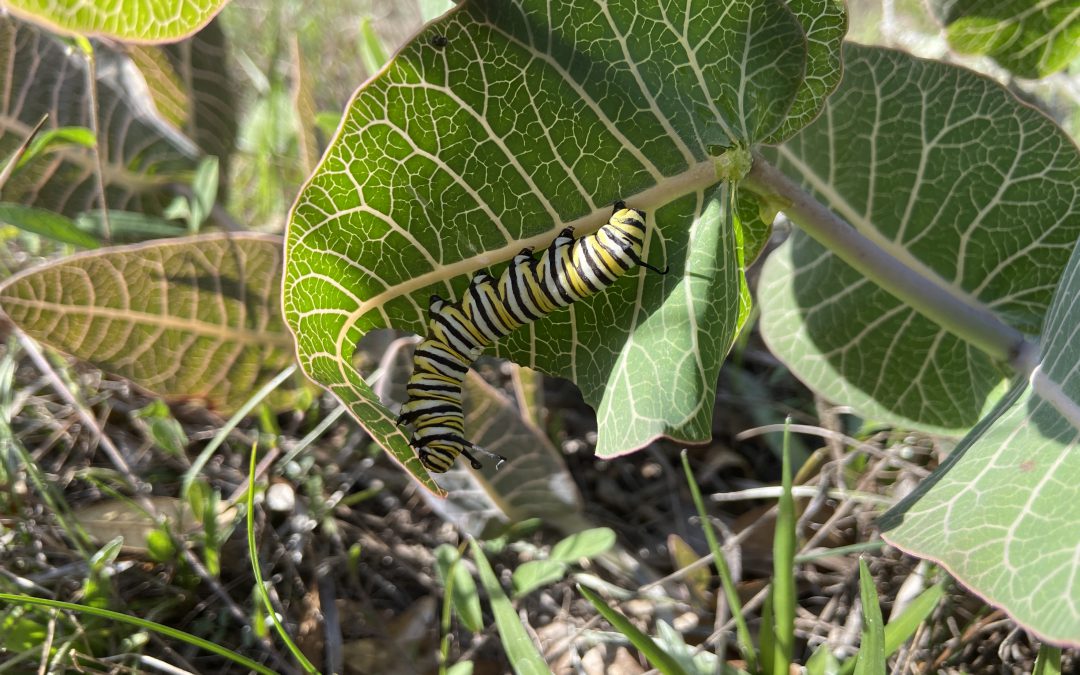
by Mary Salinas | Aug 20, 2021
On August 12, 2021, our panel answered questions on a wide variety of landscape topics. Maybe you are asking the same questions, so read on!
Ideas on choosing plants
What are some perennials that can be planted this late in the summer but will still bloom through the cooler months into fall?
Duranta erecta ‘Sapphire Showers’ or ‘Gold Mound’, firespike, Senna bicapsularis, shrimp plant, lion’s ear
Where can native plants be obtained?
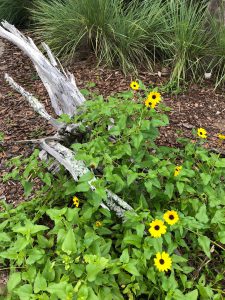
Dune sunflower, Helianthus debilis. Photo credit: Mary Salinas UF/IFAS Extension.
Gardening Solutions: Florida Native Plants – see link to FANN: https://gardeningsolutions.ifas.ufl.edu/plants/ornamentals/native-plants.html
What are some evergreen groundcover options for our area?
Mondo grass, Japanese plum yew, shore juniper, ajuga, ferns such as autumn fern.
What are some ideas for partial morning sun butterfly attracting tall flowers to plant now?
Milkweed, salt and pepper plant, swamp sunflower, dune sunflower, ironweed, porterweed, and salt bush.
I’m interested in moving away from a monoculture lawn. What are some suggestions for alternatives?
Perennial peanut, powderpuff mimosa, and frogfruit.
We are new to Florida and have questions about everything in our landscape.
Florida-Friendly-Landscaping TM Program and FFL Web Apps: https://ffl.ifas.ufl.edu/
https://ffl.ifas.ufl.edu/resources/apps/
UF IFAS Gardening Solutions: https://gardeningsolutions.ifas.ufl.edu/
What are some of the top trends in landscaping today?
Houseplants, edible gardens, native plants, food forests, attracting wildlife, container gardening, and zoysiagrass lawns
Edibles
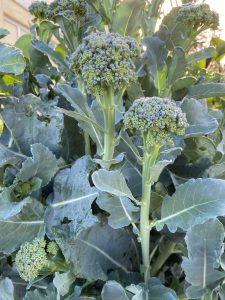
Artwork broccoli is a variety that produces small heads. Photo credit: Mary Salinas UF/IFAS Extension.
What vegetables are suitable for fall/winter gardening?
Cool Season Vegetables: https://gardeningsolutions.ifas.ufl.edu/plants/edibles/vegetables/cool-season-vegetables.html
North Florida Gardening Calendar: https://edis.ifas.ufl.edu/publication/EP451%20%20%20
Florida Vegetable Gardening Guide: https://edis.ifas.ufl.edu/publication/vh021
How can I add herbs to my landscape?
Herbs in the Florida Garden: https://gardeningsolutions.ifas.ufl.edu/plants/edibles/vegetables/herbs.html
My figs are green and hard. When do they ripen?
Why Won’t My Figs Ripen: https://www.lsuagcenter.com/profiles/rbogren/articles/page1597952870939
What is best soil for raised bed vegetable gardens?
Gardening in Raised Beds: https://edis.ifas.ufl.edu/publication/EP472
And there are always questions about weeds
How can I eradicate cogongrass?
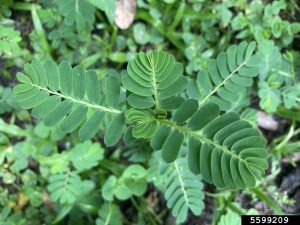
Chamber bitter is a troublesome warm season weed in our region. Photo credit: Brantlee Spakes Richter, University of Florida, Bugwood.org
Cogongrass: https://edis.ifas.ufl.edu/publication/WG202
Is it okay to use cardboard for weed control?
The Cardboard Controversy: https://gardenprofessors.com/the-cardboard-controversy/
What is the best way to control weeds in grass and landscape beds?
Weed Management Guide for Florida Lawns: https://edis.ifas.ufl.edu/publication/EP141
Improving Weed Control in Landscape Planting Beds: https://edis.ifas.ufl.edu/pdf/EP/EP52300.pdf
Landscape practices
Can ground water be brackish and stunt plants?
Reclaimed Water Use in the Landscape: https://edis.ifas.ufl.edu/publication/ss545
How can I prevent erosion from rainwater runoff?
Stormwater Runoff Control – NRCS: https://www.nrcs.usda.gov/wps/portal/nrcs/detail/national/water/?cid=nrcs144p2_027171
Rain Gardens: https://gardeningsolutions.ifas.ufl.edu/design/types-of-gardens/rain-gardens.html
And https://gardeningsolutions.ifas.ufl.edu/pdf/articles/rain-garden-manual-hillsborough.pdf
What is the best time of the year to propagate flowering trees in zone 8B?
Landscape Plant Propagation Information Page – UF/IFAS Env. Hort: https://hort.ifas.ufl.edu/database/lppi/
Which type of mulch works best on slopes greater than 3 percent?
Landscape Mulches: How Quickly do they Settle?: https://edis.ifas.ufl.edu/publication/FR052
When should bulbs be fertilized?
Bulbs and More – UI Extension: https://web.extension.illinois.edu/bulbs/planting.cfm
Should I cut the spent blooms of agapanthus?
Agapanthus, extending the bloom time: https://gardeningsolutions.ifas.ufl.edu/plants/ornamentals/agapanthus.html
http://blogs.ifas.ufl.edu/wakullaco/2020/10/07/extending-bloom-time/
Plant questions
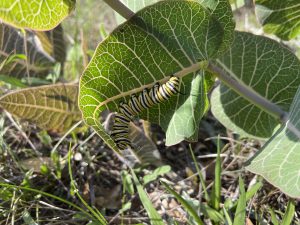
Monarch caterpillar munching on our native sandhill milkweed, Asclepias humistrata. Photo credit: Mary Salinas, UF IFAS Extension.
I planted native milkweed and have many monarch caterpillars. Should I protect them or leave them in nature?
It’s best to leave them in place. Featured Creatures: Monarch Butterfly: https://edis.ifas.ufl.edu/pdf/IN/IN780/IN780-Dxyup8sjiv.pdf
How does Vinca (periwinkle) do in direct sun? Will it make it through one of our panhandle summers? Can I plant in late August?
Periwinkles and No more fail with Cora series: https://gardeningsolutions.ifas.ufl.edu/plants/ornamentals/periwinkles.html#:~:text=Plant%20your%20periwinkles%20where%20they,rot%20if%20irrigated%20too%20frequently.
Insect and disease pests
What to do if you get termites in your raised bed?
The Facts About Termites and Mulch: https://edis.ifas.ufl.edu/publication/IN651
How to combat fungus?
Guidelines for ID and Management of Plant Disease Problems: https://edis.ifas.ufl.edu/publication/mg442
Are there preventative measures to prevent diseases when the humidity is very high and it is hot?
Fungi in Your Landscape by Maxine Hunter: http://blogs.ifas.ufl.edu/marionco/2020/01/16/fungi-in-your-landscape/
If you missed an episode, check out our playlist on YouTube https://www.youtube.com/watch?v=bp0HfdEkIQw&list=PLhgoAzWbtRXImdFE8Jdt0jsAOd-XldNCd















